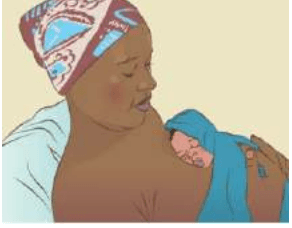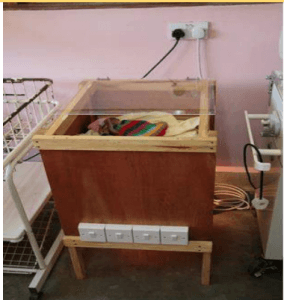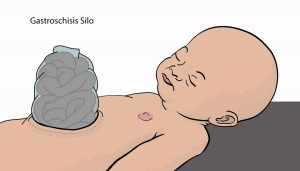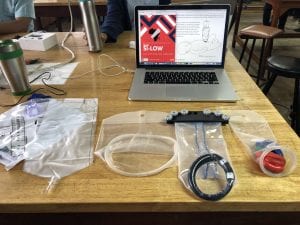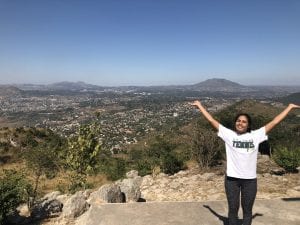This second week has been one of eye opening lessons and challenges. I started the week in the CPAP office working on my data project. I am entering data related to the supervisor visits. As I started to learn more about the CPAP project and reading, I realized that treating infants with a CPAP related issue is just one small aspect of having overall healthier babies. The Rice CPAP team has found that a common denominator for infants with respiratory distress syndrome, sepsis, birth asphyxia, or other condotions is hypothermia among infants to some degree. So often times even if these babies are successfully put on CPAP, they are hypothermic which can lead to severe life threatening complications if not addressed.
This surprised me as I hadn’t really thought about hypothermia as such an important concern and made me realize that providing for basic health needs and general infant care is an equally if not more important issue to focus on. When I had thought about healthcare concerns in resource limited countries in the past, I had thought about things very one dimensionally: what is the problem at hand? How can we provide something low cost and easy to use? How successful is treatment of this single condition?
In the hopes of expanding my learning on the hypothermia issue as well as other basic healthcare concerns, I have started working on a hypothermia guide for mothers that can be put up in the NICU. This guide goes over basic preventative measures and things mothers can do for their infant if they are hypothermic.
Here in Malawi, mothers do something called Kangaroo Mother Care (KMC) to keep their infant warm. They place their infant on their bare chest so there is skin to skin contact between mother and child and then wrap the infant up with their clothing. In every hospital we visited, they had a Kangaroo Mother Care ward for mothers who have healthy infants who just need to be kept warmth. They also use radiant warmers and hot cots to keep the infants warm when mothers cannot do KMC or if they infant is not healthy enough to be outside of the Neonatal ICU.
Alongside working on that, I was able to connect with a doctor from Lilongwe (the capital city of Malawi about 4 hours away) on my gastroschisis project. Gastroschisis is a condition in which an infant’s intestines are born outside their body. This congenital birth defect affects about 1 in 2000 infants and tends to affect more premature infants, so the condition is more commonly seen in Africa than in the US. This past semester at Rice, my team worked on a low cost, easy to use solution to treating this condition. We developed an alternative prototype bag that essentially covers the intestines and allows them to naturally descend back into the body cavity. I brought this prototype along with me to Malawi and was able to connect with a pediatric surgeon in Lilongwe who has attempted to treat the condition in three infants using a female condom. He has not had success yet, and says that one of the main reasons why is because the basic nursing and surgical care cannot support gastroschisis infants.
This lesson of the importance of basic patient care is one that threads together many of the projects I am interested in here. It is very difficult to treat a complicated condition such as gastroschisis without being able to provide a conducive environment to care for infants after the surgery for those 4-6 weeks in which they must be looked after in the hospital and be administered IV fluids, nutrition, and constant monitoring. I am meeting with the head of pediatric surgery at Queens in the upcoming weeks and am looking forward to getting his feedback on our prototype as well as learn about how they do the surgery at Queens.This work week taught me a lot about adjusting to others needs and understanding that a strong foundation in basic patient care is needed in order to move towards sustainable improvement of healthcare in Malawi.
Over the weekend, we had the Malawi interns we are working with over for a barbecue. It was really fun to socialize with them as I don’t see them on a day to day basis. On Sunday, we hiked Michiru Mountain and the view from the top was absolutely incredible. We could see mountains in every direction and could even spot Kabula lodge (where we are staying) from the top. We are hoping to work our way up to more difficult mountains in the next few weekends…stay tuned for my attempt at a fitness regime to get ready for that.
Warm Wishes,
Sajel
